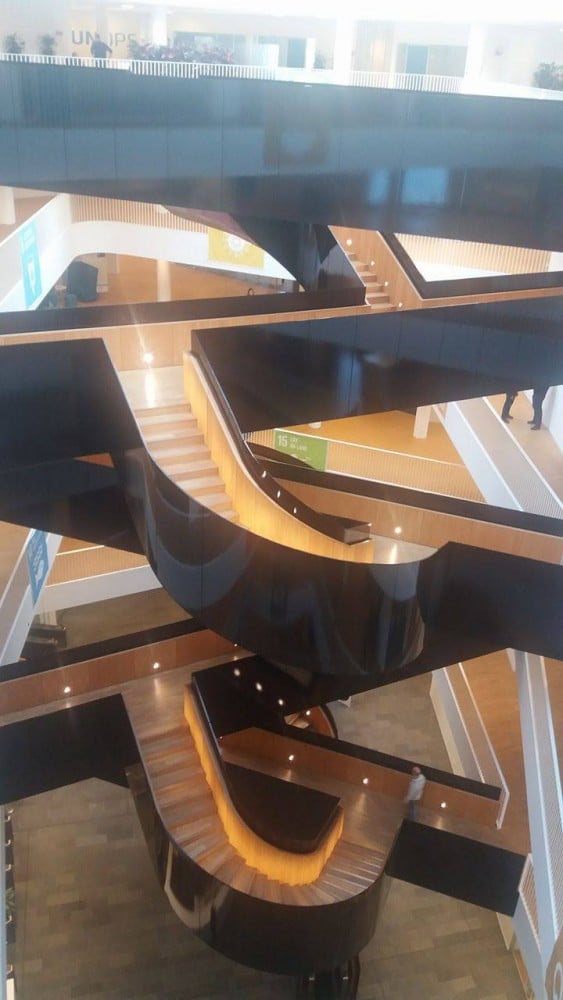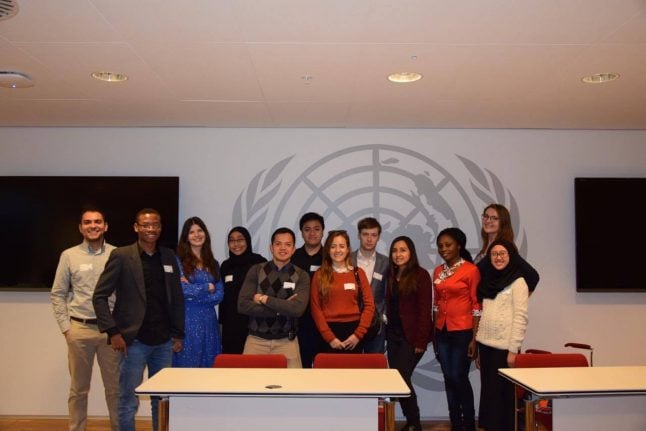An international border crossing between Sweden and Denmark didn’t stop the NFGL Local Network at Lund from making the short trip to Copenhagen to visit the UN City.
Inaugurated in July 2013 by UN Secretary-General Ban Ki-moon and Her Majesty Margrethe II of Denmark, the UN City houses offices of nine different UN agencies.
Nadia Nazarbaeva from Russia and Pamela Lozano from Peru were a part of the Lund delegation, and share their perspectives on the UN City visit.
Nadia Nazarbaeva
My life in Sweden and study at Lund University opened me to new perspective on international relations. As a student within the Swedish Institute Scholarship Programme I have become a part of the international network of young people who put their efforts into the positive development of the society.
My Master’s programme in Visual Culture is focused on discovering different visual forms of representations and new perspectives in intercultural relations.
In this context, a trip to the UN City was a great experience to get insights into the main organization that establishes international dialogue.
The star-shaped building has a symbolic meaning, demonstrating the inclusion of all parts of the world.
The building shows not only remarkable design, but also the responsibilities of UN and staff members who promote sustainable development and environmental standards.
Many technological developments help to regulate energy and water consumption and, at the same time, are parts of exterior design.
Exploring the interior space, we paid attention to the main staircase that seems more like a sculpture and unites all parts of the building, all the UN agencies, and people working there.

During our visit we learned many different aspects that illustrate how the physical space of the building reflects the main values and principles of the UN.
I hope to have another opportunity to get to know more about UN City in the future.
Pamela Lozano
Our experience visiting the UN City in Copenhagen was very interesting and enlightening.
Among various interesting facts, we learned that the UN City in Copenhagen is the sixth largest UN campus measured by the amount of staff and that they accommodate – approximately 1400 employees coming from more than 100 different countries.
Also, the UN City is formed by two campuses. The staff members of the nine agencies are located in Campus 1 while UNICEF’s warehouse, currently considered the largest humanitarian warehouse in the world, is located in Campus 2.
During our visit, we could see that the campus has been built with a special focus on sustainability and has been awarded the European Commission’s Green Building Award for new buildings.
As an example, the building has more than 1400 solar panels, almost one solar panel per employee, which helps to reduce the need of electricity and has a positive impact on the environment.
It was very interesting to see how the design of the building is focused in encouraging interaction among employees, which reflects the UN role of supporting cooperation and positive dialogue among countries.
Additionally, we learned about all the efforts that the UN mobilizes in order to achieve the sustainable development goals that were established with the purpose to end poverty, protect the planet and ensure prosperity for all.
In this regard, if you are interested in learning more about the 2030 agenda for sustainable development please visit http://www.un.org/sustainabledevelopment/takeaction/.


 Please whitelist us to continue reading.
Please whitelist us to continue reading.